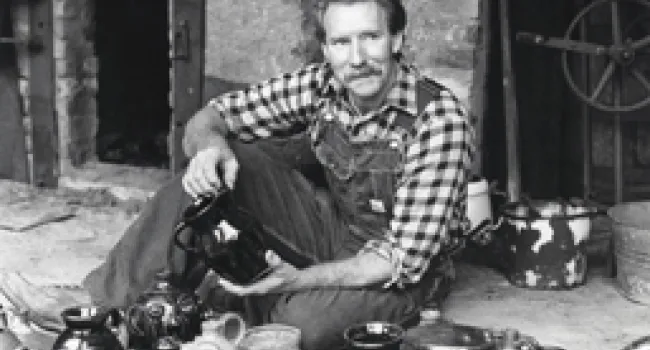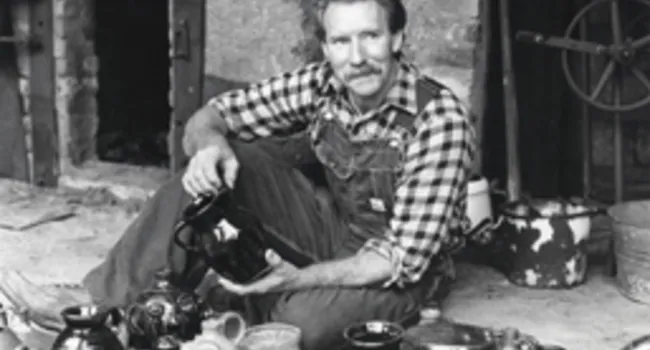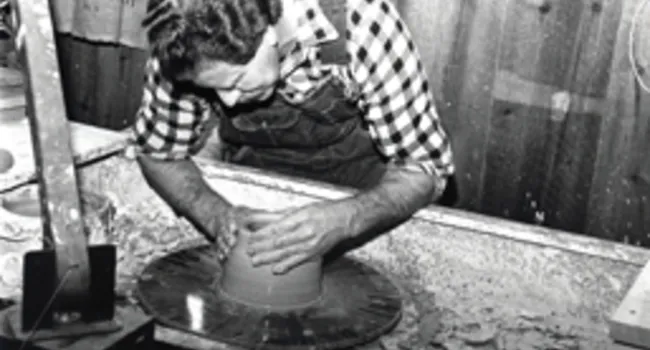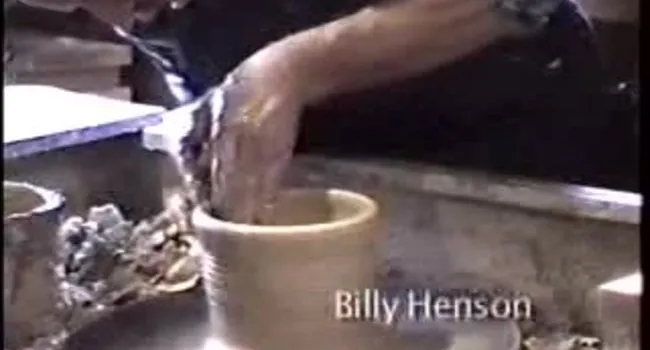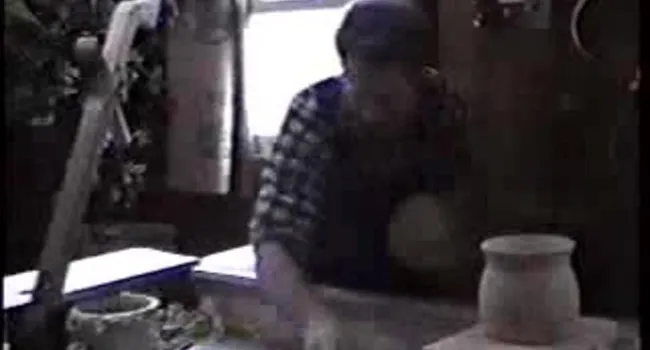Billy Henson talks about the difference between using sand or glass in a glaze.
A native of Lyman in Spartanburg County, Henson came from a long line of traditional potters. Both his grandfather, Jesse Vardry Henson, and his great-uncle, David Carr Henson, were folk potters in the Greenville-Spartanburg area. During the late nineteenth and early twentieth centuries, the alkaline-glaze tradition that originated in the Edgefield District of South Carolina had migrated to this region and the Greenville-Spartanburg area had become a center for the production of alkaline-glazed stoneware. By the 1950s, the folk pottery tradition had all but vanished from the area.
In 1986, Henson constructed a traditional pottery shop complete with a wood-burning groundhog kiln, a treadle or “kick” wheel, and a water-powered glass beater for preparation of the glaze ingredients. Henson’s efforts in reviving the alkaline-glazed stoneware tradition in South Carolina were particularly significant because he was the only potter working in the tradition at the time. One of Billy's closest apprentices, James Roddy turned pots until his passing in 2007.
Today, his sister Linda Greene and her husband Billy turn pots and fire in a similar groundhog kiln, located on Henson family property. Henson received the Jean Laney Harris Folk Heritage Award in 1991.
